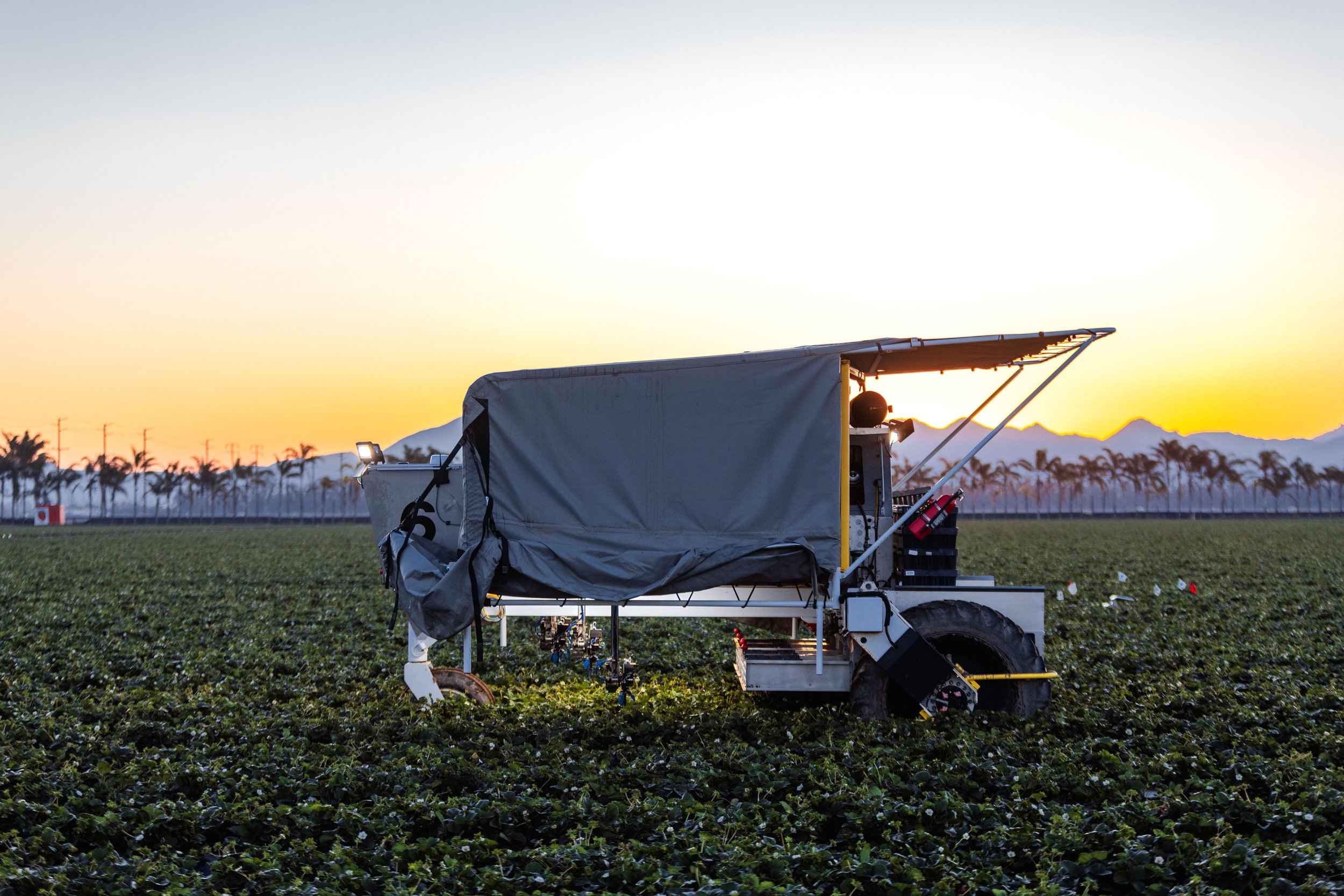Robotic Strawberry Pickers Take to the Fields
By: Molly Cruse
Published in Capital Press on August 5th, 2022.
A group of Advanced Farm's robotic tractors drive autonomously inside strawberry beds. According to Advanced Farm, one harvester can pick 100 pounds of strawberries per hour.
DAVIS, Calif. — Walk into any grocery store this summer, and chances are you will be greeted by rows of strawberries. Until recently, each of those berries would have been individually hand-picked by legions of farmworkers.
But Kyle Cobb, the co-founder and president of Advanced Farm, is changing that. “In the history of the world, no piece of fresh fruit or veg has been picked by anything but a human hand,” said Cobb.
Cobb started Advanced Farm, an agricultural robotics company based in Davis, Calif., in 2018 along with three other founders: Carl Allendorph, Mark Grossman and Cedric Jeanty.
“We decided to take our skills in robotics and apply them to ag,” said Cobb, who along with the same founding team members, started a robotics company 15 years prior in the solar industry.
“Davis is a big ag town and so we are always inspired by the problems that we see and that our grower friends are seeing, with respect to labor in particular," he said. "And the challenge with the hard tasks that humans do today, we wanted to try and automate some of that.”
Strawberries are one of the most labor-intensive crops in the U.S. Unlike some other crops that now are predominantly harvested by machinery, strawberries still require hand-picking.
Strawberry harvesting machines have not existed because harvesting the delicate fruit is a tricky business.
“(The robots) have to be rugged because they're out in real field conditions, so that's been a real challenge,” said Daniel Sumner, an agricultural economist at the University of California-Davis. “And asking a robot to do delicate things like reach out with little fingers and decide whether a strawberry is ripe or not and look behind a leaf to find it — that’s tough.”
According to a UC-Davis Department of Agricultural and Resource Economics 2021 report, harvesting one acre of strawberries costs farmers between $30,000 and $50,000 in labor costs.
Cobb believes improving technology is the answer.
Robotic picking arms of Advanced Farm's robotic harvester picks and sorts strawberries. Each robotic harvester has four picking arms.
“When you really look at the numbers and specialty crops, in particular, so much of the system is designed around humans, which results in really high costs for things like labor that can only be addressed through robotics,” Cobb said.
Four years after starting Advanced Farm, Cobb and his team had developed a strawberry harvesting robot. Each robot features four "picking" arms and, according to Cobb, one person can operate five machines at once.
“This past season, I'd say, is when we really turned the corner,” said Cobb. “We've picked millions of strawberries in 2022 so far, and we have 16 machines contracted. So we're well past the single prototype testing phase, and we're now focused on scaling the business and growing our fleet size.”
But some experts say robotics may not be the be-all-end-all solution for all strawberry farmers. While robotic harvesters may be practical for larger scale growers and shippers, they may not be viable economic or practical solutions for smaller farms.
“Agriculture changes slowly, so I see the integration of robots to be a more gradual thing,” said Mark Bolda, director of the University of California’s Santa Cruz County Cooperative Extension and a berry specialist.
While Bolda agrees that robotics and advancing technology is necessary for agriculture as a whole, he remains skeptical about the incorporation of robots into the industry and the economic viability of the robots all together.
Yet, Cobb remains hopeful the robotic strawberry harvester will revolutionize strawberry picking and change the face of the industry.
“I think we can have a really big impact on the industry just by, frankly, helping it sustain as an industry here in the U.S. Growers are having a really hard time finding labor that they need,” said Cobb. “So we can bridge that gap and provide another solution and in the meantime also significantly improve the working conditions for the farmworkers that are left and bring them into better jobs that they're much more biologically suited to do, like sorting and packing fruit, operating machinery, maintaining equipment, things like that."
Advanced Farm's robotic strawberry harvester picks strawberries in Davis, California.


